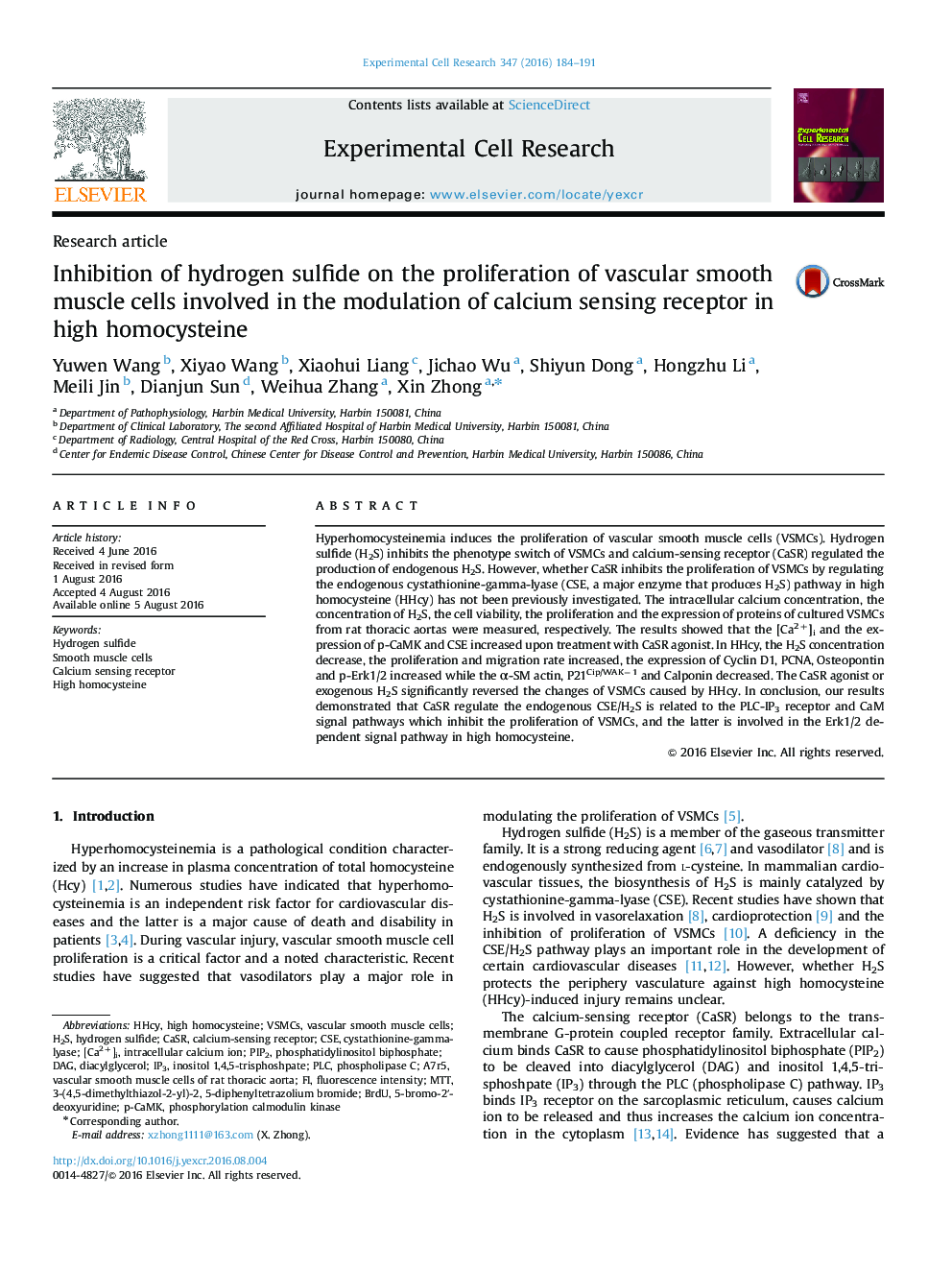| کد مقاله | کد نشریه | سال انتشار | مقاله انگلیسی | نسخه تمام متن |
|---|---|---|---|---|
| 2129897 | 1401567 | 2016 | 8 صفحه PDF | دانلود رایگان |
• CaSR activation increased the production of endogenous H2S in high homocysteine VSMCs.
• CaSR modulated the CSE/H2S are related to the PLC-IP3R and Ca2+-CaM signal pathways.
• Inhibition of H2S on the proliferation of VSMCs is involved in the Erk1/2 pathway.
• Explore the potential roles of CaSR in regulating VSMCs proliferation in high homocysteine.
Hyperhomocysteinemia induces the proliferation of vascular smooth muscle cells (VSMCs). Hydrogen sulfide (H2S) inhibits the phenotype switch of VSMCs and calcium-sensing receptor (CaSR) regulated the production of endogenous H2S. However, whether CaSR inhibits the proliferation of VSMCs by regulating the endogenous cystathionine-gamma-lyase (CSE, a major enzyme that produces H2S) pathway in high homocysteine (HHcy) has not been previously investigated. The intracellular calcium concentration, the concentration of H2S, the cell viability, the proliferation and the expression of proteins of cultured VSMCs from rat thoracic aortas were measured, respectively. The results showed that the [Ca2+]i and the expression of p-CaMK and CSE increased upon treatment with CaSR agonist. In HHcy, the H2S concentration decrease, the proliferation and migration rate increased, the expression of Cyclin D1, PCNA, Osteopontin and p-Erk1/2 increased while the α-SM actin, P21Cip/WAK−1 and Calponin decreased. The CaSR agonist or exogenous H2S significantly reversed the changes of VSMCs caused by HHcy. In conclusion, our results demonstrated that CaSR regulate the endogenous CSE/H2S is related to the PLC-IP3 receptor and CaM signal pathways which inhibit the proliferation of VSMCs, and the latter is involved in the Erk1/2 dependent signal pathway in high homocysteine.
Figure optionsDownload high-quality image (258 K)Download as PowerPoint slide
Journal: Experimental Cell Research - Volume 347, Issue 1, 10 September 2016, Pages 184–191
